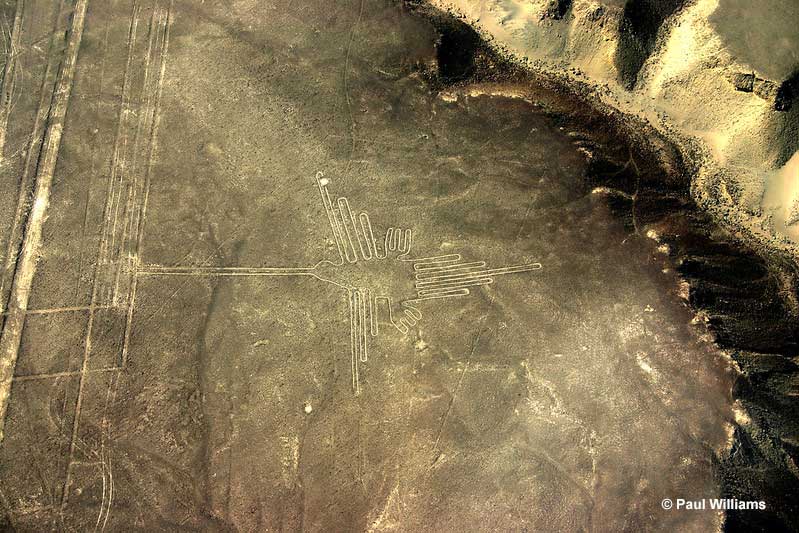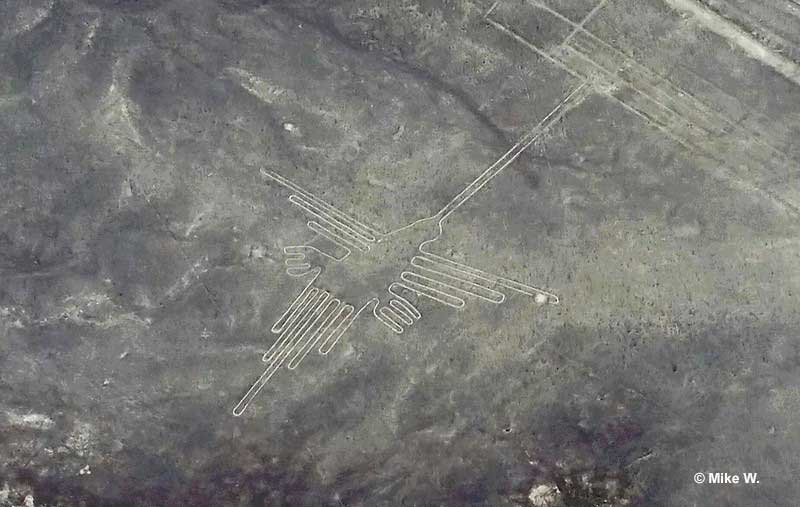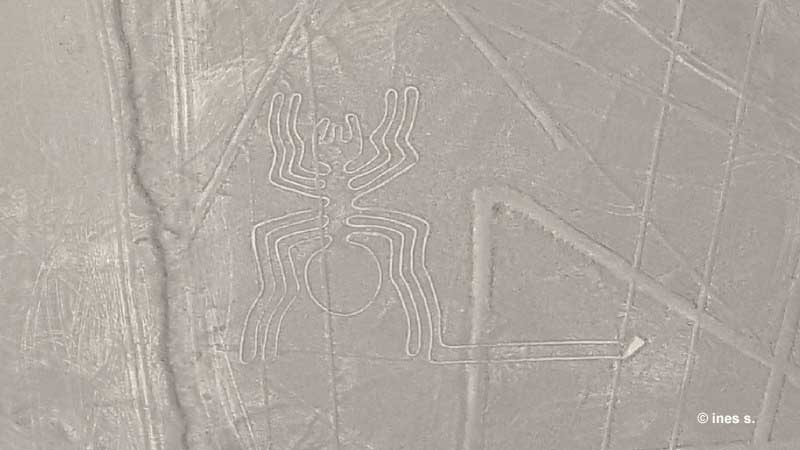
The Nazca Lines phenomenon has been a tourist magnet for many – these huge patterns in the desert show symbols, patterns, and animals, including a big hummingbird!
What exactly are those huge designs that decorate the Peruvian desert? When were they made, and who created them?
On this page
What Are The Nazca Lines?
The Nazca Lines are a series of designs made in the soil of a desert region in southern Peru. This UNESCO World Heritage Site was created by peoples from indigenous Peruvian cultures between 400 BC and 500 AD.
These geoglyphs include lines and various designs that stretch across 19 square miles of desert. The lines are impressive, especially when seen from the air, and they are visible from nearby hills. However, researchers have demonstrated that, to make the lines, you don’t need to see them from above.
People probably created them without direction from the sky or from nearby hills. The lines were made by removing the top layer of red-brown soil to reveal a lower, lighter-colored yellowish layer.
Most of the lines are a bit more than a foot wide but some are six feet in width, and the longest go on for 400 yards! The majority of the Nazca Lines are simple lines and shapes but at least 70 of the designs show animal and plant-like shapes.
Spaniards mentioned the Nazca Lines as trail markers in writings that date back to the 16th century. However, they weren’t really discovered in modern times until Peruvian archeologist Toribio Mejia Xesspe found them in 1927.
The Notorious Hummingbird
The Nazca Line Hummingbird is one of the more dramatic and better-preserved designs. The lines show a bird with a long, straight beak, long, pointed tail, outstretched wings, and big feet sticking out on both sides of it.
Although some people have wondered if it might depict something else, most believe that the design shows a hummingbird. Anyone who has seen hummingbirds would probably agree. After all, how many birds with a small head and long, pointed beak are typically seen in flight?
We can’t really tell what species it is but the long tail makes it look like a type of Hermit. The people who made it would have been familiar with hummingbirds. These fancy feathered dynamos are common in Peru and the country has well over a hundred hummingbird species!
The Nazca Hummingbird is easy to pick out from the other designs. It is unique and is 305 feet long.
Other Creations
The hummingbird isn’t the only animal shown in the Nazca Lines. Several other plants and animals are also depicted. Curiously, many of them are of animals and plants that don’t occur near Nazca.
Many seem to be from the rainforests of Amazonia, hundreds of miles to the east and on the other side of the massive Andean Mountains. One such animal is “The Monkey,” a design that is 305 feet long and 190 feet wide.
This design clearly shows a monkey species, perhaps a Squirrel Monkey, Capuchin, or a Spider Monkey. It has a long, curled tail that forms a swirled pattern, a clear monkey-like head, and long arms and legs with fingers and toes.
Other animal designs include a 154-foot-long spider, a big 440-foot-long condor, a lizard, a dog, a Humpback Whale, a heron, a pelican, and a parrot. There are also designs of a big flower and a large tree.
Some of these designs are easily recognizable, but others may be open to interpretation. While the spider, lizard, dog, and Humpback Whale geoglyphs clearly show those animals, the condor and heron are a bit more artistic and abstract.
Both show big, flying birds, but they don’t quite look like herons or condors.
Current Preservation
The Nazca Lines have been naturally preserved by the dry, stable conditions of their desert environment. There is so little rain and wind that the Lines have been intact for more than 2,000 years!
Rare, heavy rains in recent times may change that, but for the moment, the Lines are still there. The main threats to the Lines are squatters that have moved into the area, any amount of digging or mining, and vehicles that drive across them.
The Nazca Lines are officially protected, and this rarely occurs, but it only takes a few vehicles to make a big impact on them.
Frequently Asked Questions
Are Nazca Lines man-made?
Yes, the Nazca Lines are man-made. They were created by local indigenous Peruvian cultures more than 2,000 years ago.
Is it possible to see the Nazca Lines?
Yes, it is possible to see the Nazca Lines. They are a popular tourist destination and there are special plane rides for tourists.
When were the Nazca Lines discovered?
The Nazca Lines were discovered in 1927 by Peruvian archaeologist Toribio Mejia Xesspe.



